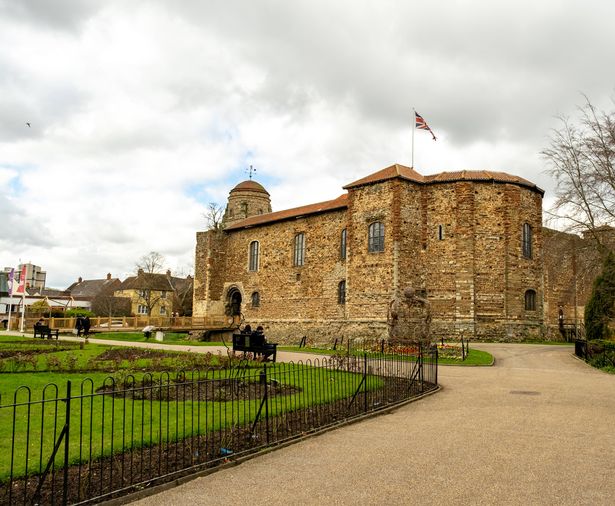The Essex town of Colchester has a rich history with its winding ancient streets teeming with Roman and medieval buildings, colourful pastel-painted cottages and a thriving foodie scene
With its narrow, serpentine streets lined with Roman and medieval structures, vibrant pastel-coloured cottages, and a thriving culinary scene, this Essex town was granted city status in 2022 as part of the late Queen’s Platinum Jubilee celebrations. It is also believed to have been England’s first capital.
Colchester, formerly known as Camulodunum during the Roman era, served as the initial capital of Roman Britain, and consequently, the first capital of what would eventually become England. According to Roman records, it was a hub of power and the residence of Catus Decianus, Britannia’s governor.
READ MORE: Coffee drinkers praise mushroom drink for energy without ‘jitters’
The city has maintained its military significance since Roman times, with the Colchester Garrison currently housing the 16th Air Assault Brigade. Colchester’s medieval landscape is dominated by the impressive Colchester Castle, an 11th-century Norman keep constructed atop the ancient Roman Temple’s vaults, making it one of England’s oldest castles.
The city boasts notable medieval remnants, including the gateway of the Benedictine Abbey of St John the Baptist (referred to as “St John’s Abbey”) and the ruins of the Augustinian priory of St Botolph (locally known as “St Botolph’s Priory”), as well as numerous parish churches from this era.
For enthusiasts of historic architecture, significant Victorian landmarks include the Town Hall, Albert Hall, and Jumbo Water Tower. Colchester is home to a variety of museums.
The Castle Museum, nestled within Colchester Castle, showcases an extensive display of Roman Colchester, reports the Express. In close proximity, you’ll find the Hollytrees Museum, a social history museum featuring children’s exhibits in the former residence of ex-MP Charles Gray, and the Natural History Museum, housed in the former All Saints’ Church.
The Colchester Archaeological Trust has unveiled a visitor centre and museum at the old Cavalry Barracks, exhibiting finds from the Roman Circus, complete with replicas and models of the circus, as well as discoveries from nearby Roman cemeteries.
In 2014, brick and marble columns from the monumental façade of the precinct of the Temple of Claudius were unearthed behind the High Street.
Colchester also prides itself on a vibrant arts scene, including the 1972 Mercury Theatre and the neighbouring Colchester Arts Centre.
The town is teeming with cafes, pubs and restaurants catering to all tastes and budgets. Among these, you’ll discover a Michelin-starred restaurant, Kintsu, a modern British eatery situated in a Grade II listed former barn.
However, perhaps the most picturesque part of the town is the historic Dutch Quarter. According to Visitcolchester.com, this area is situated just north of the High Street and encompasses Maidenburgh Street, West Stockwell Street, East Stockwell Street, Stockwell Street, St Helen’s Lane, Northgate Street and Nunn’s Road.
A representative for the tourist attraction shared: “It was the 16th century home to Flemish Protestant refugees fleeing religious persecution having been defeated in a rebellion against Catholic Spain.
“The houses pre-date the Dutch arrival and were formerly inhabited by the Jewish community and other immigrants. Today it is a quiet residential area just off of the High Street.
“The Dutch Quarter fell into a state of decay during the early 20th century and received a Civic Trust Building award after being regenerated during the 1970s. It is a pleasant area in which to spot many different architectural styles from the 16th century to the present day.”
Colchester isn’t the only town or city to have been the capital of England before London – with the likes of Winchester, Tamworth and Northampton all having previous had the honour.
There isn’t a specific document that first declared London as the country’s capital but between 1066 and the 1200s it gradually rose in prominence to eventually become the clear capital.


